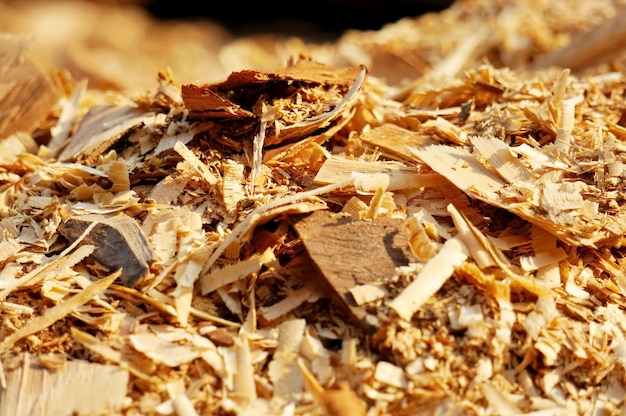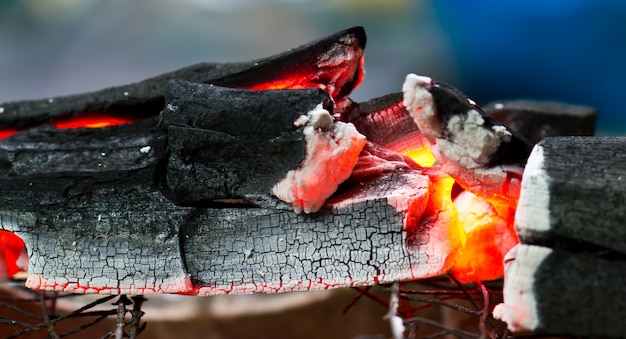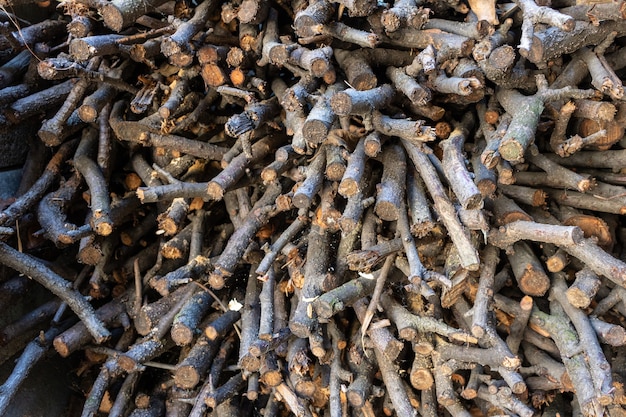How do you make cheap activated charcoal?
Activated charcoal, also known as activated carbon, is a highly porous substance that is widely used for its adsorption properties. It is commonly used in various industries, including water and air filtration, medicine, and even in beauty products. While activated charcoal is readily available in the market, you may be interested in making it at home for cost-saving purposes. In this article, we will explore the process of making cheap activated charcoal, providing you with a step-by-step guide.
What is activated charcoal?
Before diving into the process of making activated charcoal, let’s briefly understand what it is. Activated charcoal is a form of carbon that has been treated to increase its surface area and porosity. This treatment involves exposing the carbon to high temperatures and chemicals, creating tiny pores that can trap and remove toxins, pollutants, and impurities. The activation process enhances the charcoal’s ability to adsorb substances, making it an effective filtration and purification agent.
The benefits of making activated charcoal at home
While commercially produced activated charcoal is readily available, making it at home can offer several benefits. Firstly, it allows you to have greater control over the source and quality of the materials used. Additionally, homemade activated charcoal can be a more cost-effective option, especially if you have access to the necessary ingredients. By following a few simple steps, you can create your own activated charcoal without breaking the bank.
The process of making cheap activated charcoal
Materials needed:
- Hardwood or coconut shells
- Metal container with a tight-fitting lid
- Heat-resistant gloves
- Fire source (e.g., stove, outdoor grill)
- Water
Step 1: Collecting the raw material
To make activated charcoal, you will need a source of carbon-rich material. Hardwood, such as oak or maple, and coconut shells are commonly used for this purpose. Ensure that the material is dry and free from any contaminants.
Step 2: Processing the raw material
Start by breaking down the hardwood or coconut shells into small pieces. You can use a hammer or a similar tool to accomplish this. The aim is to increase the surface area of the material, which will aid in the activation process. Once the material is broken down, transfer it to your metal container.
Step 3: Activating the charcoal
Next, place the metal container on a heat source, such as a stove or outdoor grill. Slowly heat the container, ensuring that the lid is tightly sealed. This process eliminates impurities and activates the charcoal, opening up its pore structure.
Step 4: Cooling and washing
After the activation process, allow the charcoal to cool completely. Once cooled, carefully remove the lid, as the container might still contain residual gas. To further clean the charcoal, wash it with water to remove any remaining impurities. Use heat-resistant gloves while handling the hot charcoal during this step.
Did you know?
Activated charcoal is commonly used in emergency situations to treat certain types of poisoning. It works by adsorbing toxins and preventing their absorption by the body.
Step 5: Drying the charcoal
Spread the washed charcoal on a clean surface and allow it to air dry completely. This step is crucial to prevent mold growth, especially if you plan to store the charcoal for future use.
Can you use vinegar to activate charcoal?
Charcoal is a versatile substance with many uses, including purifying water, absorbing odors, and providing filtration. Activated charcoal, in particular, has become increasingly popular for its ability to trap and remove toxins from the body. But can you use vinegar to activate charcoal? Let’s explore this question further.
Understanding activated charcoal
Activated charcoal is produced by heating regular charcoal to high temperatures, creating a porous surface that increases its absorption capacity. This process removes impurities and creates a substance that can effectively adsorb various chemicals and toxins.
The role of vinegar
Vinegar, specifically apple cider vinegar, is often praised for its health benefits and natural cleaning properties. While vinegar alone does not activate charcoal, it can be used as a pre-treatment to enhance its effectiveness.
Here is a simple method to activate charcoal using vinegar:
- Soak the charcoal in a bowl of apple cider vinegar for several hours.
- Remove the charcoal from the vinegar and rinse it thoroughly under running water.
- Allow the charcoal to dry completely before using it in any application.
By soaking the charcoal in vinegar, you are essentially preparing the surface to maximize its adsorption capabilities. This pre-treatment can help in enhancing the overall performance of activated charcoal.
However, it’s important to note that vinegar is not the only way to activate charcoal. Other methods include using high heat or specific activating agents like potassium hydroxide.
When using activated charcoal for medicinal purposes or water filtration, it is crucial to follow proper instructions and use high-quality activated charcoal from reputable sources. While vinegar may enhance the properties of charcoal, it’s always best to consult specific guidelines for your intended use.
In conclusion
Vinegar can be used as a pre-treatment to enhance the adsorption capabilities of activated charcoal. Soaking the charcoal in vinegar before use can help optimize its performance. However, it’s important to understand that vinegar alone does not activate charcoal; it merely aids in improving its efficiency. Always follow proper guidelines and instructions when using activated charcoal for medicinal or filtration purposes.
How do you make charcoal burn faster?
Charcoal is a popular fuel used for grilling and barbecuing, known for its long-lasting burn. However, there may be instances where you want your charcoal to burn faster, such as when you’re in a hurry or need higher heat for cooking. Here are some tips to help you make charcoal burn faster:
1. Use thinner pieces of charcoal
Thicker charcoal pieces take longer to ignite and burn. Opt for thinner charcoal pieces or break larger ones into smaller chunks using a charcoal hammer or mallet. Thinner pieces will have more exposed surface area, allowing them to catch fire more quickly.
2. Increase airflow
Airflow is crucial for fueling the combustion process and speeding up the burn. Arrange the charcoal in a way that allows air to circulate freely, such as by using a charcoal chimney or stacking the pieces in a pyramid shape. You can also open the bottom and top vents on your grill to increase oxygen flow.
3. Add a charcoal starter fluid
If you’re using lump charcoal, consider adding a small amount of charcoal starter fluid to speed up the ignition process. Be cautious when using starter fluid and only apply it to the charcoal before lighting. Follow the manufacturer’s instructions carefully and never add it to lit or burning charcoal.
4. Preheat the charcoal
Before adding your food to the grill, allow the charcoal to preheat for 10-15 minutes. This will ensure that the coals reach their maximum heat and efficiency.
Tip: Avoid adding additional charcoal once the cooking process has started. This can disrupt the airflow and cause uneven burning.
Remember to exercise caution when handling and lighting charcoal, and always follow safety guidelines provided by the manufacturer. By following these tips, you can make your charcoal burn faster and get your grill ready for cooking in no time!
Is it safe to use wood as a fuel?
Wood has been used as a source of fuel for centuries, providing warmth and cooking capabilities. However, when it comes to using wood as a fuel, safety should always be a top priority. Here are some key points to consider:
1. Properly seasoned firewood:
Using properly seasoned firewood is essential for safety. Freshly cut or green wood contains a high amount of moisture, which can lead to excessive smoke, creosote buildup, and increased risk of chimney fires. Seasoned firewood, which has been dried for at least six months, burns more efficiently and produces less smoke.
2. Regular chimney maintenance:
To ensure the safe use of wood as a fuel, regular chimney maintenance is necessary. Creosote, a byproduct of burning wood, can accumulate in the chimney and pose a fire hazard. Regular inspections, cleanings, and repairs by a professional chimney sweep are essential to prevent chimney fires.
3. Use of appropriate equipment:
When using wood as a fuel, it is important to have the right equipment to ensure safety. This includes fireplace screens or doors to prevent sparks or embers from escaping, carbon monoxide detectors to detect any potential gas leaks, and properly installed and maintained wood-burning stoves or fireplaces.
Remember, safety should always be a priority when using wood as a fuel. By following proper precautions, such as using seasoned firewood, regular chimney maintenance, and appropriate equipment, you can enjoy the benefits of wood as a fuel while minimizing the risks.
If you’re considering using wood as a fuel, here are some safety tips to keep in mind:
- Only burn dry and seasoned firewood.
- Regularly clean and inspect your chimney or flue.
- Invest in carbon monoxide detectors and smoke alarms.
- Never leave a fire unattended and ensure it is fully extinguished before leaving the room or going to bed.
- Avoid burning treated or painted wood, as it can release toxic fumes.
By following these safety tips and guidelines, you can enjoy the warmth and ambiance of a wood-fueled fire while keeping your home and loved ones safe.
How long is too long to soak wood chips?
Soaking wood chips is a popular technique used in smoking meat or adding flavor to grilled dishes. Many people wonder how long they should soak their wood chips before using them. While there is no hard and fast rule, it’s important to know the optimal soaking time to get the best results.
The Importance of Soaking Wood Chips
Soaking wood chips before using them helps prevent them from catching fire and allows them to smolder and produce smoke instead. The water-soaked chips help regulate the temperature and provide a slow release of flavor during the cooking process.
While some people believe that longer soaking times lead to better results, this is not always the case. In fact, soaking wood chips for too long can have negative effects on your BBQ or grilling experience.
How Long to Soak Wood Chips
Generally, soaking wood chips for 30 minutes to 2 hours is sufficient. This timeframe allows the chips to absorb enough moisture to produce smoke without excessively prolonging the smoking process or impacting the heat levels on your grill.
Remember, it’s essential to soak only the amount of wood chips you need for a particular cooking session. Excessively soaked chips may become waterlogged and hinder their ability to generate smoke effectively.
If you’re working with dense or hardwood chips, you might consider soaking them for a longer period, such as 4-6 hours. But be cautious not to soak them overnight or for extended periods, as this can result in oversoaked chips that produce less smoke and take longer to heat up.
Tips for Soaking Wood Chips
- Use a container or pan large enough to fully submerge the wood chips.
- Choose clean, fresh water for soaking.
- If you want to infuse additional flavors, experiment with adding liquids like beer, apple juice, or wine to the soaking water.
- Drain the wood chips well before placing them on the grill.
- Consider using a smoker box or aluminum foil pouch to contain the soaked chips and prevent them from falling through the grill grates.
In summary, soaking wood chips for 30 minutes to 2 hours is generally recommended, with longer soak times reserved for denser wood. Experimentation and finding what works best for your specific grilling needs will ultimately determine the ideal soaking time for your wood chips.
Why do you burn wood into charcoal?
Burning wood to create charcoal has been a practice that has been around for centuries. While it may seem counterintuitive to deliberately burn wood, the process of converting wood into charcoal offers various benefits that make it a valuable resource.
The Benefits of Charcoal Production
Charcoal production has several advantages over using raw wood:
- Energy Efficiency: Charcoal burns more efficiently than wood, making it an excellent choice for heating and cooking.
- Longer Burning Time: Charcoal burns longer than wood, providing a steady source of heat or fuel.
- Reduced Smoke and Emissions: Compared to burning wood, charcoal produces fewer emissions and less smoke, making it a cleaner alternative.
- Enhanced Flavor: Charcoal is often used in barbecues and grills due to its ability to impart a smoky flavor to food.
The Process of Making Charcoal
To produce charcoal, wood undergoes a process called pyrolysis, where it is heated in the absence of oxygen. This eliminates moisture and volatile compounds, leaving behind mostly pure carbon.
“Pyrolysis involves heating wood at a high temperature (around 500-900°C) in a controlled environment, such as a charcoal kiln, to drive off impurities and leave behind carbon-rich charcoal.”
There are different methods of charcoal production, including traditional methods like pit kilns or modern techniques like retort systems. The choice of method depends on factors such as scale of production and desired charcoal qualities.
Uses of Charcoal
Charcoal has a wide range of applications:
- Cooking and Heating: Charcoal is commonly used for barbecues, grilling, and cooking due to its high heat output and ability to burn evenly.
- Industrial Processes: Charcoal serves as a fuel in various industrial processes, including metallurgy, smelting, and the production of activated carbon.
- Art and Craft: Charcoal is used by artists for drawing and sketching due to its smooth texture and dark color.
- Water Filtration: Activated charcoal, a form of charcoal treated with oxygen, is widely utilized in water purification systems to remove impurities and odors.
Overall, the process of burning wood into charcoal offers numerous advantages, from energy efficiency to enhanced flavor. Whether it’s for heating, cooking, or industrial use, charcoal remains an essential resource valued for its versatility and performance.



